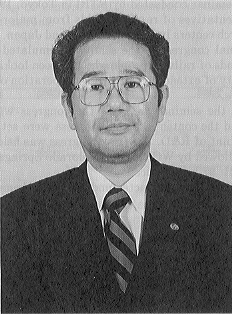 Unlike the continent, the Japan Islands is for the greater part occupied with steep, mountainous areas, which compels most of its population of 120 million to inhabit the narrow plains along the rivers emptying into the seas. With an on-going speedup of the backbone traffic routes, the railways and highways are confronted with a mounting need for profile improvement and in consequence the proportion of tunnels excavated in the mountainous zones is ever on the increase. Meanwhile, in big cities crowded with people and facilities, not only the railways and subways but other life lines are steadily moving underground.
Unlike the continent, the Japan Islands is for the greater part occupied with steep, mountainous areas, which compels most of its population of 120 million to inhabit the narrow plains along the rivers emptying into the seas. With an on-going speedup of the backbone traffic routes, the railways and highways are confronted with a mounting need for profile improvement and in consequence the proportion of tunnels excavated in the mountainous zones is ever on the increase. Meanwhile, in big cities crowded with people and facilities, not only the railways and subways but other life lines are steadily moving underground.
In the tunnel construction of the mountainous region with rock overburden, regardless of the cross-sectional area, the so-called NATM taking the shotcrete and rock bolts as the main support member is now the mainstream technology. Geologically, the land is subject to the complicated tectonic changes with developments of faults and fractured zones. It is said that there is no tunnel in Japan that encounters a fracture of more than 1 km long. Recently, on the New Tomei-Meishin Expressway three-lane highway tunnels of 200m2 class in the cross section are emerging. In the latest move in the tunneling technology various innovations are witnessed such as ground improvement technology to stabilize fractured unstable faces or new idea in forepiling technology and positive introduction of shield shell-mounted TBM.
In urban tunneling, the shield tunneling method is the mainstream technology, and lately the manual excavating shield is seldom adopted. Standards are mainly closed mechanical shield e.g. slurry shield or earth pressure balanced shield. The reasons are mainly outstanding excellence in stabilization of the heading. Besides, the closed shield technology has originally been developed or improved in Japan. To mention the latest example, part of the credit for successful construction of Euro-tunnel goes to Japan, which as a member of the consortium, sent the workers operating the Japan-made shields. Within Japan, several examples are cited of working shield tunnels of 14 m diameter class, in Tokyo Bay Crossing Road Tunnel and others. A noteworthy point in the latest shield technology is emergence of tunnels capable of constituting a multi-circular cross section and non-circular ones. These technological developments also go to the credit of the Japanese. They are free from complex combinations of different cross sections, can do without any expansion of cross section at great depth underground and they are expected to make valuable contributions to further progress on the shield tunneling technology. Notably, the former, i.e., multi-circular face shield tunneling method will be convenient in application to building an extra-deep underground station.
Already several cases are known and more cases will be expected to come in the future. Behind such a remarkable development of shield tunneling technology in Japan lies the background that Japan has dominated the world with overwhelming volumes of shield tunnels executed and, more important, the great significance of the fact that it is Professor Y.MatsumotoCScience University of Tokyo who pioneered and guided in the multi-circular face shield tunneling method.
Beginning in 1996, in a bid to push the technological and legislative efforts to release the urban underground of great depth for public utility from the bondage of land holders, an Investigation Committee for Deep Subterranean Utilization has been officially established, opening a future prospect of the weight of public works shifting in the direction of technology under high hydraulic pressure with the tendency of urban tunnels going increasingly deep into the ground.